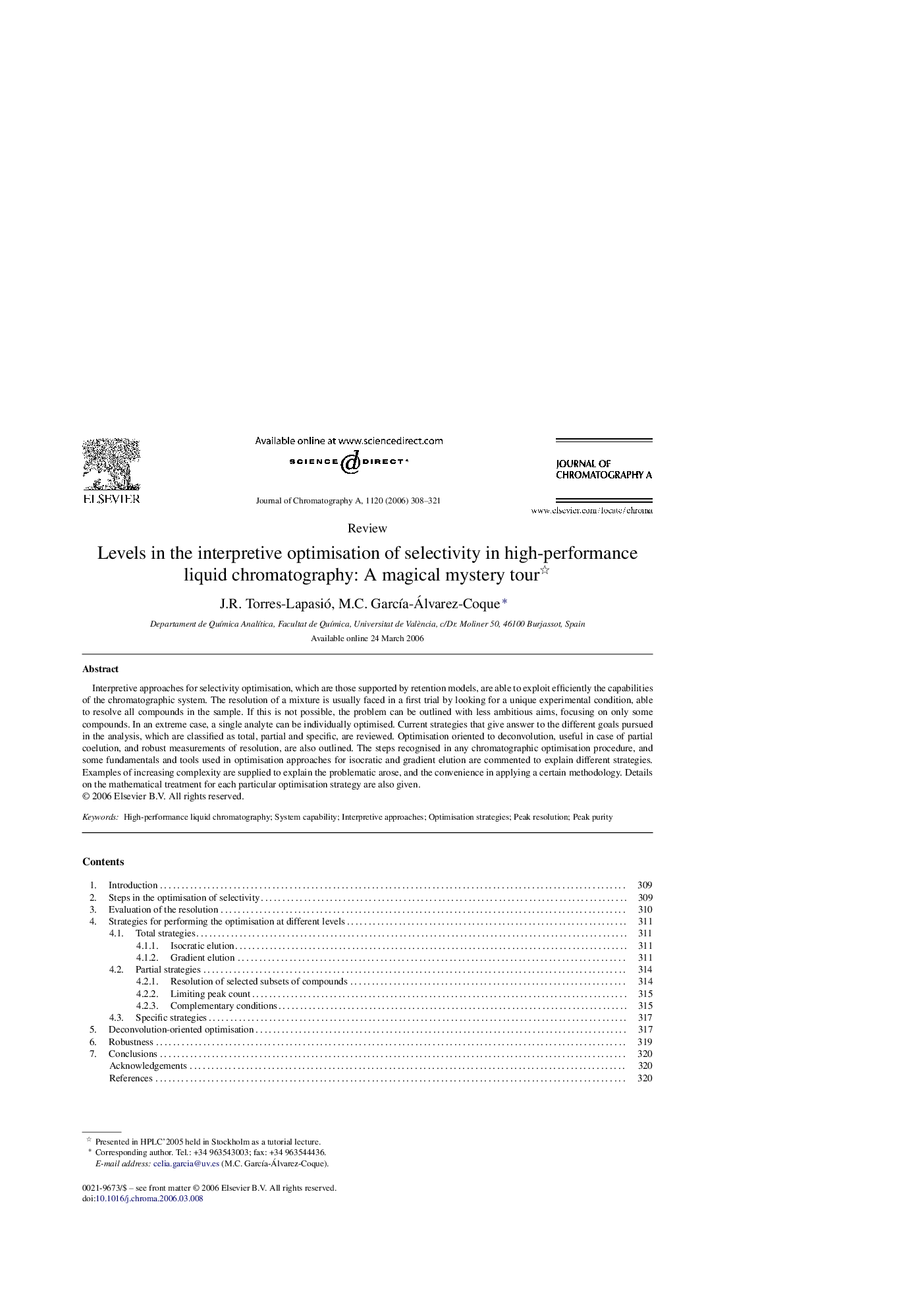| Article ID | Journal | Published Year | Pages | File Type |
|---|---|---|---|---|
| 1210056 | Journal of Chromatography A | 2006 | 14 Pages |
Interpretive approaches for selectivity optimisation, which are those supported by retention models, are able to exploit efficiently the capabilities of the chromatographic system. The resolution of a mixture is usually faced in a first trial by looking for a unique experimental condition, able to resolve all compounds in the sample. If this is not possible, the problem can be outlined with less ambitious aims, focusing on only some compounds. In an extreme case, a single analyte can be individually optimised. Current strategies that give answer to the different goals pursued in the analysis, which are classified as total, partial and specific, are reviewed. Optimisation oriented to deconvolution, useful in case of partial coelution, and robust measurements of resolution, are also outlined. The steps recognised in any chromatographic optimisation procedure, and some fundamentals and tools used in optimisation approaches for isocratic and gradient elution are commented to explain different strategies. Examples of increasing complexity are supplied to explain the problematic arose, and the convenience in applying a certain methodology. Details on the mathematical treatment for each particular optimisation strategy are also given.
